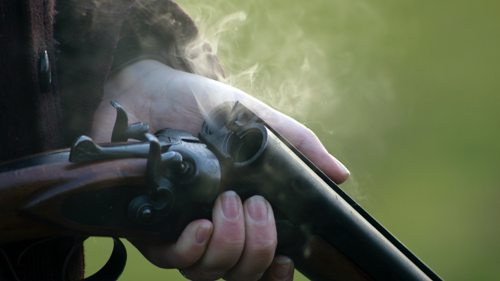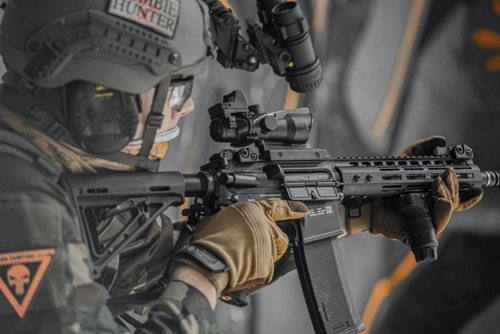Shooting properly and accurately is the most important qualification of a professional hunter. It often takes years of practice to achieve such skills.
To begin this process, mastering the knowledge of your gun’s features and functions will be the first step to take. Then what are the two basic styles of firearm actions? The following article will assist your first step by providing information on this information.

Contents
What Is Firearm Actions’s Style?
It’s difficult for hunters to advance without understanding firearm actions such as loading, unloading, shooting, and ejecting of the gun. In other words, the user needs to know how his tool works and what it can do. When you understand these actions and know how to apply them to real-life situations, you are ready for a predatory race.
There are many different gun types on the market, resulting in the variation of basic action patterns. Some guns may suit one pattern, while others suit another one. Then what are the types?
What Are The Two Basic Styles Of Firearm Actions?
As firearm actions refer to a chain of actions from loading to reloading after finishing firing, there are two types of firearm actions. These are Single-shot and repeating styles. Each style represents different uses and needs. Our detailed explanation below will help you widen your knowledge.
Single Shot Action
The single-shot action (aka rolling block, falling block, trapdoor, bolt action) is the most typical hunting method. It is ideal for professional hunters to take out their target with one shot, although most hunters also find it challenging.
Because there is no magazine (ammunition storage), the single-shot firearm requires the user to reload every time they shoot. One thing to note here is that you must open the cartridge and close it before the next shoot.
Today, firearms with single-shot arms are becoming increasingly popular. There are many guns with this style, such as the rifle, revolver, and pistol. With the advent of metallic cartridges, things gradually evolved, but single-shot guns were indispensable. It is quite crucial for shooters trying to hone their skills in one shot.
However, there are still some differences between revolver and pistol in the setting to shoot. Pistols allow you to only reload once before taking your first shot without worrying about subsequent shots. Meanwhile, revolver users have to reload each time they shoot.

Below is a quick summary of the features of the single-shot action:
- You can carry out this action through a pistol, a rifle, or a shotgun.
- Don’t come with magazines.
- Only one cartridge for any given time.
- Users must discard the cartridge after usage and replace it if necessary.
- Before shooting again, you must close the action or use a hammer when expanding the cartridge.
- The single-shot action includes falling block, rolling block, break-open, tin-up, bolt-action, etc.
Repeating Style:
This style was born with the advantage of having extra cartridges (extra barrels, shotshells, and even cylinders), which relieve you from having to reload after each shot. Thanks to that, you can comfortably shoot at the target continuously until you run out of ammo. It is the new trend of our era when single-shot firearms are gradually losing their popularity.
The repeating action style often prevails in wars and rough hunting, especially for those who have mastered their shot. Thus making it easier for you to hunt or to knock down your targets.
In wars, good shooting skills are extremely important. However, some people still think they only need their guns to shoot repeatedly. That way, they will win without having to practice or improve their shooting skills. This thought can kill them when they face their enemies.
Instead of successfully firing, you will waste a lot of ammo and lose the opportunity to defend yourself. That’s why you shouldn’t neglect to practice and master the art of shooting. This fact even applies to hunting cases.
Whether for war or hunting purposes, you should start practicing from holding your gun to aiming and shooting.

Things to expect from repeating style firearms:
- Common in rifles.
- The ergonomic design comes with a spring-loaded tubular or metal cartridge magazine.
- The cartridge is directed towards the barrel by a level, semi-automatic mechanism, chamber, or pump.
- Repeaters need separate magazines.
- Allows shooters to load multiple rounds into a barrel that ejects through a free lock.
More detailed comparison about Single Action and Double Action – Which One Is Better For You?
What To Keep In Mind When Using These Basic Styles Of Firearm Actions?
After screening through this much information, let’s get some tips to master using these basic firearm actions perfectly.
- Choose the right gun, necessary tools and best scope before your hunt.
- Pay attention to adjust your posture and shooting distance accordingly. Don’t lock your arms but fully extend and straighten them, and don’t forget to relax your shoulders.
- Your feet should be hip-width apart. Lean your torso slightly forward and slightly arches your waist.
- The most important factor that contributes to perfect aiming and shooting is to hold the grip tight. The gun will recoil after you fire it, so the bullet won’t make its way to the target if you don’t grab it properly.
- Try to adjust your vision until the target is visible. Make sure that the top of the rear and front sight are both at the same point.
- Find a safe practice area to prevent unexpected accidents.
- Regular practice to better improve your skills.
Conclusion
Holding a gun is quite difficult for beginners. Nevertheless, training repeatedly can rapidly help you get used to it. In this article, we have come together to find the answer to the question of what are the two basic styles of firearm actions?
Having a full grasp of this information is the first step on your journey to learning how to shoot a gun. Once you fully understand the actions, it’s easier for you to work with other essential shooting aspects. We hope this article is really helpful for you on your way to becoming a professional hunter or shooter.

I am Jerry Gonzalez, and my heart beats for the great outdoors, especially in the breathtaking landscapes of Helena, Montana. Engaging with fellow enthusiasts online and at local hunting clubs has been a rewarding experience, and I find great joy in sharing knowledge and experiences with like-minded individuals. My goal is to empower my fellow hunters with well-informed choices, regardless of their experience level.
